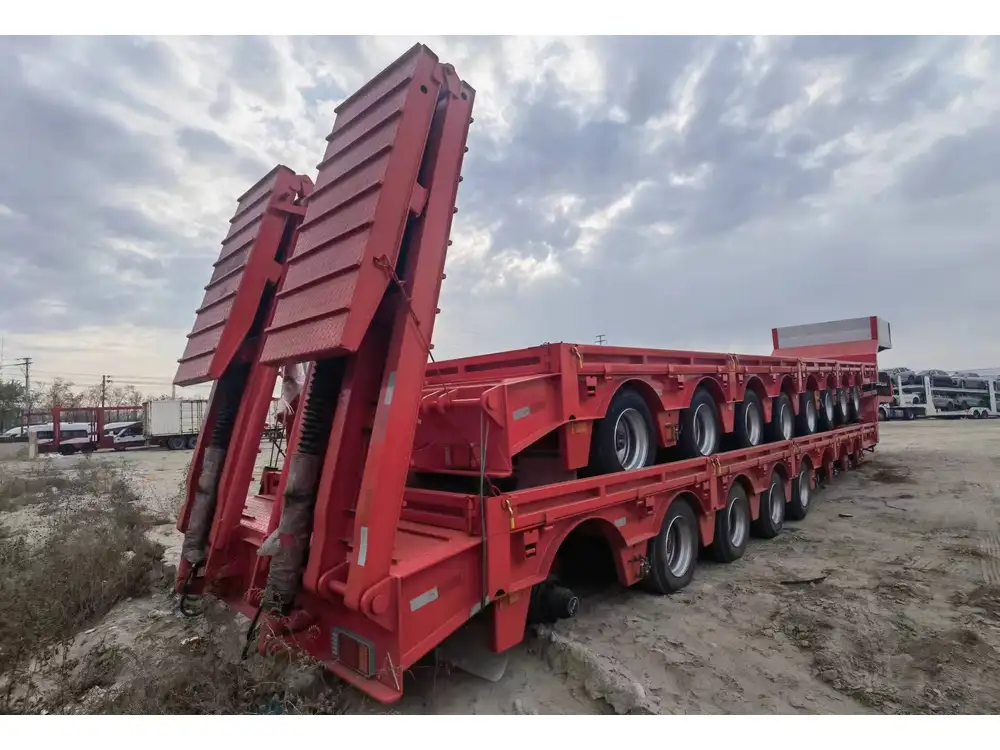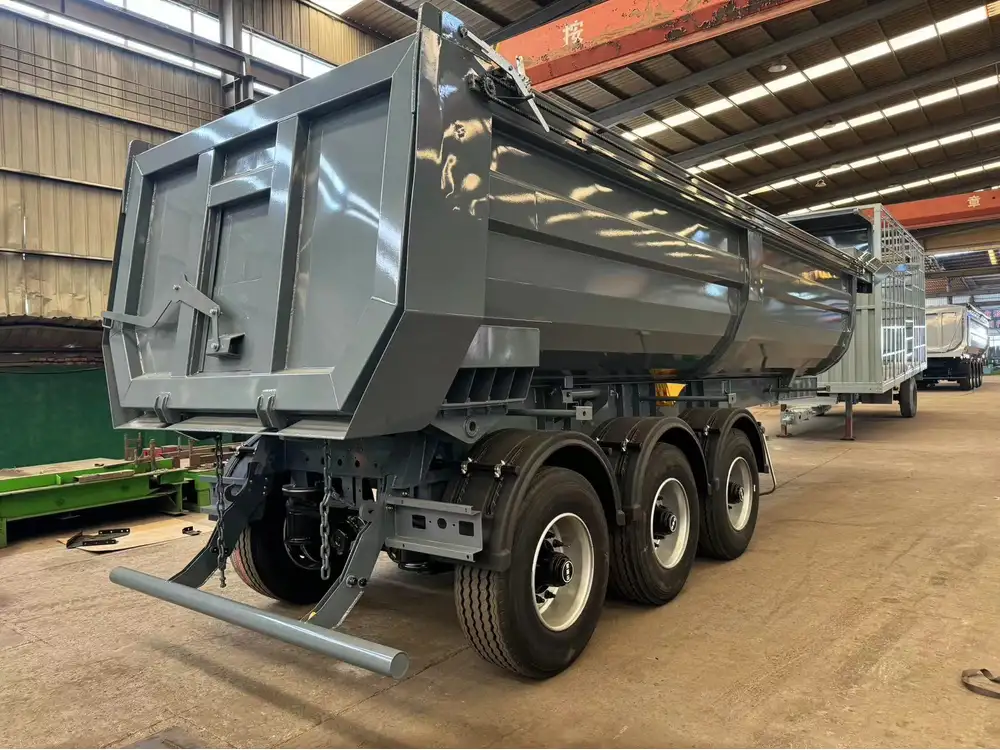Introduction to Weight Capacity Regulations
In the vast expanse of Australia, the road transport industry plays a crucial role in the economy, providing essential services for the movement of goods across the country. A significant aspect of this industry involves understanding the limitations on weight that various vehicle configurations can safely and legally carry. Semi-trailers, which are vital for transporting heavy loads, have specific regulations that govern their weight capacities.
What Determines the Weight Capacity of Semi-Trailers?
The weight capacity of a semi-trailer is determined by multiple factors, including:
- The vehicle configuration, which includes the type of semi-trailer being used (e.g., flatbed, refrigerated, curtain sider).
- The Gross Combination Mass (GCM), which is the total mass of the prime mover (truck) and the semi-trailer when loaded.
- The axle configuration, as weight limits can vary based on the number of axles and their spacing.
- State regulations, as each Australian state may have unique rules affecting weight limits and road usage.
Exploring Load Limits by Design and Configuration

General Design Weight Capacities of Semi-Trailers
The average weight capacity of a semi-trailer in Australia generally ranges from 18,000 kg to 36,000 kg, depending on design, axle configuration, and applicable road rules. Here’s a breakdown of different configurations:
| Semi-Trailer Type | Typical Load Capacity | Usage |
|---|---|---|
| Flatbed | 20,000 kg – 30,000 kg | Transporting construction materials, machinery. |
| Refrigerated | 18,000 kg – 26,000 kg | Hauling perishable goods like food, pharmaceuticals. |
| Curtain Sider | 20,000 kg – 32,000 kg | Versatile usage for various goods, including retail. |
| Tanker | 22,000 kg – 30,000 kg | Transporting liquids, chemicals. |
Gross Combination Mass (GCM)
In Australia, the Gross Combination Mass (GCM) is a pivotal term. This includes the combined weight of the load, truck, and semi-trailer. Understanding this limit is crucial not just for legality, but also for ensuring safety on the roads. The GCM for heavy rigid vehicles typically varies based on:
- The number of axles: More axles can often support more weight.
- Distance between axles: This can affect how weight is distributed and carried.
The Role of Axle Configurations
Axle configurations significantly influence the permissible weight load of a semi-trailer. The Australian Design Rules (ADRs) stipulate specific weight limits for different axle configurations. Below are common configurations and their corresponding limits:
| Axle Configuration | Maximum Total Weight (kg) | Details |
|---|---|---|
| Single Axle | Up to 6,000 kg | Common in smaller trailers. |
| Tandem Axle | Up to 18,000 kg | Traditional for many trucking operations. |
| Tri-Axle | Up to 24,000 kg | Offers better weight distribution and stability. |
| B-Double Configuration | Up to 34,000 kg | Becomes crucial in interstate transport. |

Navigating State-Specific Regulations
Weight Limit Variations Across States
Each Australian state and territory has its own set of regulations that can affect the weight carrying capacity of semi-trailers. Here’s how they can differ:
- New South Wales: Adheres strictly to GCM sets forth by the Roads and Maritime Services (RMS). Most semi-trailers can carry the maximum legal limits unless specified otherwise.
- Victoria: The Victorian government has specific codes that often allow for higher GCM in certain instances, particularly for B-Doubles, which can exceed 26,000 kg when permitted.
- Queensland: Similar to NSW, but with regional allowances based on Road Network access.
- Western Australia: Offers unique allowances for metropolitan and rural routes, with stringent checks, especially in mining areas.
- South Australia and Tasmania: Have regulations that often align closely with national guidelines, but still maintain their specific checks and balances to ensure road safety.
For transport operators, understanding these nuances is critical, as penalties for exceeding weight limits can be severe, including fines and potential vehicle impoundment.
Implications of Overloading

Risks Associated with Overweight Loads
Transporting loads that exceed legal weight limits not only contravenes Australian laws but poses significant risks:
- Safety Hazards: Overloaded trailers can lead to increased braking distances and reduced vehicle control, heightening the risk of accidents.
- Road Infrastructure Damage: Excessive weight can deteriorate road conditions, leading to further economic costs and disruption of transport networks.
- Legal Consequences: Heavy penalties may apply, along with the potential for loss of operating licenses.
Detecting Overload Issues
Operators can implement several measures to monitor weight loads effectively, including:
- On-Site Weighbridges: Regular use of certified weighbridges ensures compliance before leaving a loading facility.
- Electronic Load Monitoring: Advanced sensors can be fitted to provide real-time weight data, offering operators insights on loading practices and weight distribution.
- Training and Awareness: Staff education on weight regulations and safe loading practices can greatly reduce the risk of overload incidents.
Best Practices for Weight Management

Optimizing Load Distribution
Ensuring even weight distribution across axles is crucial for maintaining vehicle stability and adherence to legal limits. Here are some effective practices:
- Load Planning: Strategically plan how goods are loaded, considering weight and bulk characteristics.
- Utilization of Technology: Use dynamic weighing systems that adjust based on real-time load data.
- Regular Maintenance: Keep semi-trailers in optimal condition to manage weight limits effectively.
Communication with Stakeholders
Effective communication between drivers, loaders, and dispatchers ensures everyone is on the same page regarding load weights. This collaboration can mitigate errors associated with overloading.
Utilization of Specialized Transport Services
Leveraging third-party logistics providers specialized in heavy-haul transport can alleviate the burden on operators, as these providers are often up-to-date on state regulations and industry standards.

Conclusion: The Importance of Compliance and Safety
Understanding the weight capacities of semi-trailers in Australia is essential for manufacturers, operators, and drivers alike. By adhering to regulations, optimizing load management practices, and employing advanced technology, the industry can safeguard not only compliance but also the overall integrity of road safety.
In navigating this complex landscape of weight regulations, operators must remain vigilant in their practices, informed by both state and national guidelines. Ensuring compliance isn’t merely about avoiding penalties; it’s about healthier transport systems that contribute positively to Australia’s economy and infrastructure longevity. Thus, every effort made to understand and adhere to these weight limits is a step towards a more efficient and safer transport network across the nation.
By emphasizing knowledge and training on these regulations, we collectively enhance our industry’s responsibility toward safety, ensuring that semi-trailers can continue to effectively and legally carry the essential goods that drive Australia’s economy.



